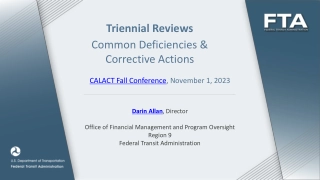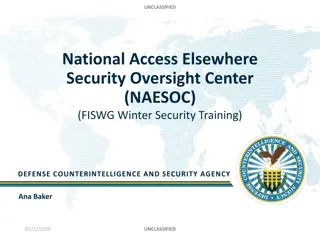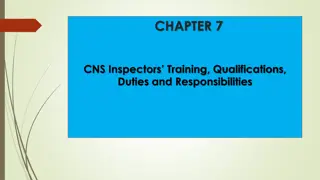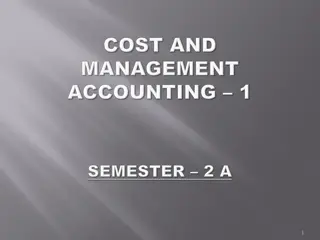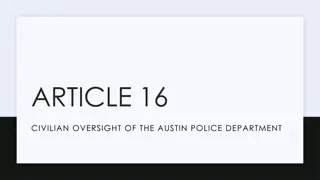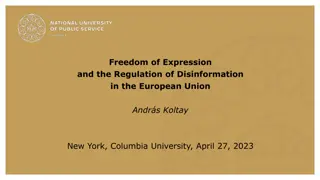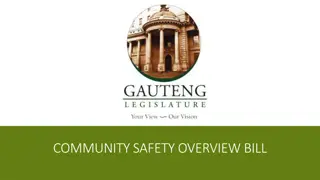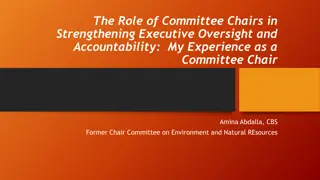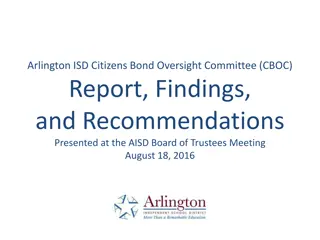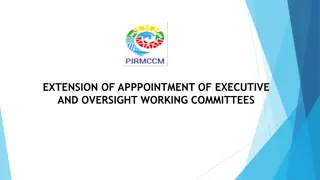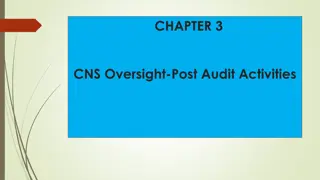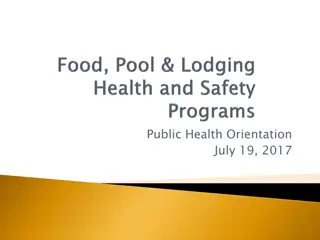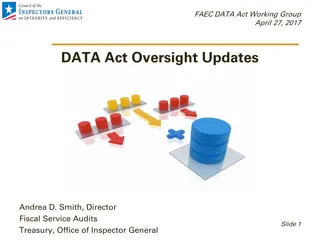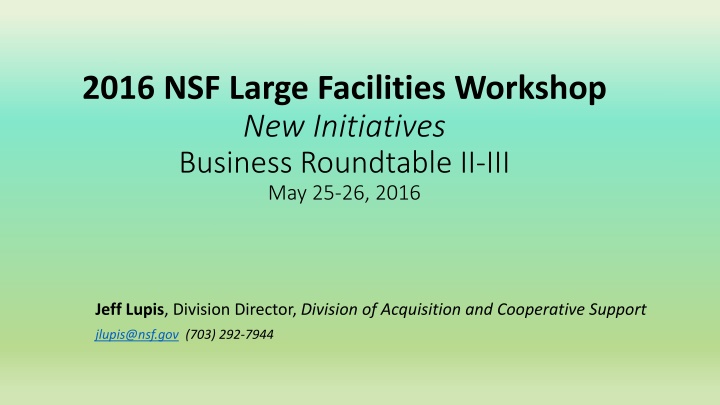
Strengthened Business Oversight for NSF Large Facility Awards
Explore the background and purpose of the 2016 NSF Large Facilities Workshop focusing on strengthening cost oversight for large facility awards. Learn about the areas of focus, stakeholder insights, and efforts to enhance the business oversight process moving forward.
Download Presentation

Please find below an Image/Link to download the presentation.
The content on the website is provided AS IS for your information and personal use only. It may not be sold, licensed, or shared on other websites without obtaining consent from the author. If you encounter any issues during the download, it is possible that the publisher has removed the file from their server.
You are allowed to download the files provided on this website for personal or commercial use, subject to the condition that they are used lawfully. All files are the property of their respective owners.
The content on the website is provided AS IS for your information and personal use only. It may not be sold, licensed, or shared on other websites without obtaining consent from the author.
E N D
Presentation Transcript
2016 NSF Large Facilities Workshop New Initiatives Business Roundtable II-III May 25-26, 2016 Jeff Lupis, Division Director, Division of Acquisition and Cooperative Support jlupis@nsf.gov (703) 292-7944
Purpose of Briefing: Discuss background and context of the current environment of strengthened cost oversight of NSF large facility awards Discuss four specific areas of strengthened cost oversight Solicit awardee insights and concerns with the award oversight process Look to improve the business oversight process going forward 2
Background/Context In 2004, responsibility for large facility cooperative agreements was moved to the Division of Contracts and Complex Agreements In FY 2010, NSF s Financial Statement Audit cited a large facility cooperative agreement where $88M in questioned contingency costs were reported Beginning in FY 2011, NSF s Financial Statement Audit has included a Significant Deficiency titled Monitoring of Construction Type Cooperative Agreements, expanding findings from the 2010 audit NSF s efforts to ensure the proper level of cost oversight, as well as outside concerns raised by NSF Stakeholders, has driven a close examination and strengthening of business procedures for managing these awards 3
Background/Context (Cont.) OIG Alert Memo NSF s Management of Cooperative Agreements, (Sept. 2012) highlighted concerns with both pre-award and post-award monitoring processes. Recommendations for awards over $50M included: Obtaining proposal and accounting systems audits for all planned large facility cooperative agreements Requiring annual incurred cost submissions and audits Requiring awardees to properly account for and separately track budgeted versus actual contingency use The OIG has issued additional alert memos and audit reports highlighting concerns under specific NSF large facility awards 4
Four Areas of Strengthened Procedures: Proposal and Accounting System Reviews/Audits Incurred Cost Audits Contingency Management Risk-Based End-to-End Cost Surveillance Policies 5
Proposal and Acct. System Reviews/Audits Strengthened Procedure: More detailed pre-award evaluation of proposal cost estimates and review (or audit) of awardee cost accounting systems/practices prior to awarding CAs Implementation: NSF Standard Operating Guidance (SOG) requires the completion of a Cost Proposal Review Document (CPRD) for all awards over $100M, documenting cost analysis and review of awardee s accounting system Thorough review of the budget estimate will be completed on a cost element basis (FDR stage) Guidance updated in 2015 to include reviews at CDR and PDR phases 6
Proposal and Acct. System Reviews/Audits (Cont.) Additional guidance included in Large Facilities Manual on format and detail required for construction and operations proposals Supportability of proposal is key Proposal audits are to be obtained when determined necessary NSF will execute independent cost assessments for construction awards > $100M The CPRD will document review of awardee accounting system Note: NSF will obtain audits of awardees accounting systems/practices prior to entering into construction CA s totaling $100M or more, where NSF is the cognizant agency and such an audit has not been performed within the past two years. 7
Proposal and Acct. System Reviews/Audits (Cont.) Note: 2 CFR 200 requires that agencies awarding cooperative agreements must have in place a framework for evaluating the risks posed by applicants before they receive Federal awards. Examples of areas to be reviewed include: Financial stability History of performance Reports and findings from audits performed under the Uniform Guidance Audit Requirements and findings from any other available audits 8
Incurred Cost Audits Strengthened Procedure: Requirements for incurred cost audits Implementation: NSF will require, at a minimum, a final review of incurred costs at project completion for large facility projects totaling $100M or more NSF will use risk analysis on a project-by-project basis to determine whether additional incurred cost audits are needed during a project NSF committed to explore best practices and to complete an analysis and recommendation for awardee cost submissions (now completed) 9
Incurred Cost Audits (Cont.) Pre-award, the CPRD requires an initial determination of the need for an incurred cost audit Post-award, a separate SOG has institutionalized NSF s project-by-project annual review of the need for incurred cost audits during performance With transition of audit process to NSF s cognizance (and unavailability of DCAA to complete audits), NSF is working to obtain audit support services Recipients should be prepared for such an audit at any time based on requirements set forth in 2 CFR 200 NSF completed a review of best practices for incurred cost submissions and determined a perspective award provision and cost data collection tool 10
Incurred Cost Audits (Cont.): In preparation for a cost incurred audit, recipients will be required to submit financial expenditures (incurred cost) data to NSF The Financial Data Collection Tool was created by NSF to assist recipients in preparing and recording financial expenditure information This tool will be required for submission of the financial expenditures data The Financial Data Collection Tool is a macro-enabled Excel workbook that provides recipients a single, standardized method for submitting cost data 11
Incurred Cost Audits (Cont.): Large Facilities Financial Data Collection Tool 12
Large Facility Financial Data Collection Tool Yellow Cells: Blue Cells: Gray Cells: Manual fill by user Linked from other report tabs Auto-calculated Recipient Name (pull from set up) Name of Facility (pull from set up) Report Period Start: Report Period End: Cooperative Support Agreement (CSA) Cost Schedule Reconciliation of Claimed Expenditures to Job Cost Ledger Select CSA Type Enter CSA # Claimed Direct Costs by Budget Category General Ledger Job Cost Ledger Adjustment Current Claimed Comment $ $ $ $ $ $ $ $ $ $ $ $ $ $ $ $ $ $ $ $ $ - - - - - - - - - - - - - - - - - - - - - $ $ $ $ $ $ $ $ $ $ $ $ $ $ $ $ $ $ $ $ $ - - - - - - - - - - - - - - - - - - - - - $ $ $ $ $ $ $ $ $ $ $ $ $ $ $ $ $ $ $ $ $ - - - - - - - - - - - - - - - - - - - - - $ $ $ $ $ $ $ $ $ $ $ $ $ $ $ $ $ $ $ $ $ - - - - - - - - - - - - - - - - - - - - - Senior Personnel Other Personnel Total Salaries and Wages Fringe Benefits Total Salaries/Wages/Benefits Equipment Travel Participant Support Other Direct Costs: Materials and Supplies Other Direct Costs: Publication/Documentation/Dissemination Other Direct Costs: Consultant Services Other Direct Costs: Computer Services Other Direct Costs: Subawards Other Direct Costs: Other Total Other Direct Costs Total Direct Costs Indirect Costs: F&A Indirect Costs: G&A Indirect Costs: Name Total Indirect Costs: Total Direct and Indirect Costs: Recipient Preparation Notes Please enter any notes or comments regarding your calculations or the data submitted for this worksheet. 13
Incurred Cost Audits (Cont.): Large Facilities Financial Data Collection Tool The Large Facilities Manual and the Large Facilities Financial Data Collection Tool can be viewed on the public NSF webpage at: https://www.nsf.gov/bfa/lfo/lfo_documents.jsp To provide comments on the Large Facilities Manual and the Large Facilities Financial Data Collection Tool, please go to the Federal Register at: https://www.gpo.gov/fdsys/pkg/FR-2016-05-09/pdf/2016-10793.pdf 14
Contingency Strengthened Procedure: Contingency management Implementation: Standardized guidance for contingency estimating in the Large Facilities Manual Supportability of the estimate is key NSF Completed a review of the controls and thresholds for the Change Control Board (CCB) process 15
Contingency (Cont.) Standardized reporting of contingency in monthly project reports and the bi-monthly large facilities status report New standardized award provision to clearly identify the NSF approved contingency budget and incremental allocations to the Recipient New SOG to incorporate the NAPA recommendation that NSF retain control of a portion of contingency (up to 100%) based on the circumstances of the award 16
End-to-End Cost Surveillance Policies Strengthened Procedure: Development of a risk-based approach for end-to-end cost surveillance Implementation: NSF chose the threshold of $100M to focus on the highest risk awards NSF committed to expand the scope of strengthened procedures to large facility operations by September 15, 2015 (completed) After implementation, NSF will invite a qualified third-party organization to evaluate the results 17
End-to-End Cost Surveillance Policies BFA continues to strengthen cost estimating and cost monitoring oversight procedures through issuance and update of numerous SOGs, e.g.,: SOG 15-1 Negotiation, Award and Payment of Management Fee SOG 15-6 Guidance on Pre and Post-Award Cost Monitoring Procedures SOG 16-2 Budget Contingency Obligation and Allocation SOG 16-4 DACS CSB Standardized Cost Analysis Guidance NSF is further evaluating cost oversight procedures considering subsequent internal evaluation and Stakeholder input 18
Additional Issues Identified Additional issues identified through: Internally determined areas for improvements Ongoing interactions with Stakeholders National Academy of Public Administration (NAPA) Report Use of Cooperative Agreements to Support Large Scale Investment in Research Additional issues include but are not limited to: Proper use of management fee Conducting awardee estimating system reviews 19
Questions? Concerns? Other Issues? 20

